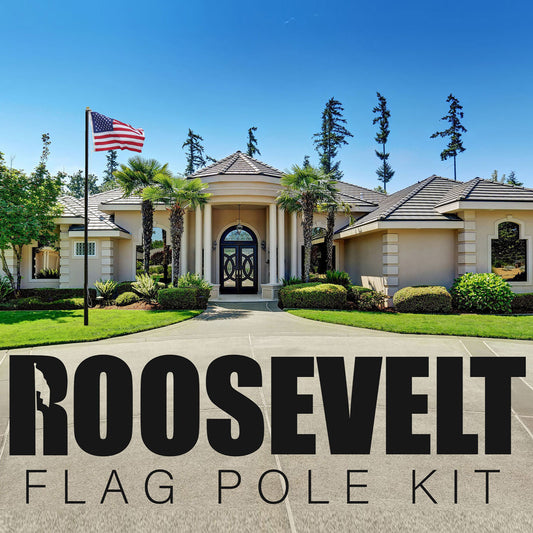
Why Flagpole Taper Matters: Improving Stability and Aesthetics
A flagpole’s shape does more than affect how it looks—it also determines how it performs.
One of the most important design elements is taper, the gradual narrowing of the pole from base to top.
While it might seem like a subtle detail, taper directly impacts stability, strength, and overall visual appeal. Understanding why flagpole taper matters will help you make a smarter choice when purchasing or upgrading your display.
What is Flagpole Taper?
Taper refers to the slight reduction in a flagpole’s diameter as it rises. Instead of maintaining one uniform thickness, a tapered pole is wider at the bottom and narrower at the top.
This design distributes stress evenly, allowing the pole to bend slightly under pressure instead of breaking.
A well-engineered taper ensures that wind, weight, and movement are absorbed efficiently across the pole’s length—something straight, non-tapered poles struggle to achieve.
The Engineering Behind Stability
Tapered flagpoles are designed with performance in mind. Their structure offers several advantages over straight designs:
-
Improved wind resistance: A gradual taper helps wind flow smoothly around the pole, reducing drag and sway.
-
Balanced flexibility: The pole can bend slightly at the top without straining the base, preventing cracks or fractures.
-
Load distribution: Stress is directed toward the thicker base, strengthening the pole’s foundation.
-
Durability under pressure: Tapered poles handle high winds and heavy flags more safely than uniform poles.
For deeper insight into how wind dynamics affect pole performance, see wind ratings to understand how taper and engineering work together for stability.
Aesthetic Benefits of a Tapered Design
Taper doesn’t just improve stability—it also enhances how a flagpole looks. Homeowners often choose tapered poles for their elegance and proportion.
-
Sleek appearance: The narrowing shape creates a visually pleasing silhouette that looks refined and professional.
-
Better flag presentation: Because the pole tapers, the flag naturally sits higher and appears more elevated.
- Architectural harmony: Tapered poles blend seamlessly with both traditional and modern properties.
For design inspiration, explore outdoor decor ideas to see how a tapered flagpole can complement different home styles.
Taper Ratios and Design Variations
Not all tapered poles are the same. Manufacturers use different taper ratios depending on height, material, and purpose.
-
Standard residential poles often have gentle tapers for balance and aesthetic flow.
-
Commercial or large-scale poles use more pronounced tapers to handle higher wind ratings.
- Custom flagpoles can be engineered with specific taper measurements to match architectural requirements.
When comparing flagpoles, check specifications for the exact taper ratio. A small difference can significantly impact performance and stability.
Materials and Taper Performance
Taper interacts closely with material choice. Aluminum, for example, naturally supports smooth tapering while maintaining lightness and strength.
-
Aluminum: Corrosion-resistant and easily shaped for precise tapering.
-
Fiberglass: Offers flexibility but less structural stability in tall installations.
-
Steel: Extremely strong but heavier and more maintenance-intensive.
Learn more about material advantages from why aluminum flagpoles, which explains why aluminum remains the most popular choice for tapered designs.

Practical Benefits for Homeowners
For residential use, a tapered flagpole provides both functional and aesthetic returns.
-
Less movement in wind: Keeps your flag stable and prevents tangling.
-
Lower maintenance: Reduced strain means fewer repairs over time.
-
Longer lifespan: The pole resists fatigue and structural damage better than a non-tapered version.
- Professional appearance: A gentle taper adds a premium look to any property.
For an example of craftsmanship that combines durability and design, see the Americana 24ft Sectional Flagpole Kit—a tapered model built for strength and elegance.
How to Identify Quality Taper in Flagpoles
When evaluating options, consider these indicators of a well-made tapered pole:
-
Smooth transition: The diameter should decrease gradually without visible seams.
-
Consistent finish: High-quality coating or anodization prevents uneven color and texture.
-
Balanced weight: The pole should feel sturdy at the base yet not overly heavy overall.
- Reputable brand: Choose manufacturers that specify their taper ratio and wind rating.
Checking these features ensures that you’re buying a flagpole built for strength and longevity.
Final Thoughts
Taper is more than a design detail—it’s what separates a basic flagpole from one that stands strong and looks exceptional.
The right taper ensures wind stability, structural reliability, and timeless visual appeal. When shopping for your next flagpole, pay close attention to taper ratio and craftsmanship.
A properly tapered flagpole doesn’t just support your flag—it elevates it, both literally and symbolically.


















